 ~by Amanda Smith I have always intuitively been aware of writing seasons throughout a year. Some months are naturally filled with demanding family or work commitments, while others provide more writing time. Throughout the years, I have tried to wrangle the seasons, to ignore natural rhythms, in order to be consistently productive each month. Seasons do not easily conform to human whim. Anyone who has spent a year in New England knows one can cry, and cajole, and yell at March to be springy until the cows come home, but lovely weather does not arrive until mid-April. Similarly, writers can plan and plot and highlight and set timers, but life’s seasons continue to roll one into the other undeterred by our best organization. So what is a writer to do? Jerry Spinelli famously advised to “write in the cracks,” which I used to embrace with weed-like ferocity. I tried to force my writing into every possible crack, exhausting myself and probably frustrating my family. There were times when I literally ran back to my desk after tossing another load of laundry into the washer, not to waste “a crack” - yelling at March to be warm. I can’t say that was super productive. This year, I took on a new job that offered zero cracks. If allowed, this job would bleed into every tiny line like red lipstick on the wrinkly lips of my days and weeks and months. Don’t get me wrong, I love my job. But it’s a lot. Even in this tenacious job, the ever-present heartbeat of my writing seasons was present. So I listened. I paid attention. And when, at a 24 Carrot Writing meeting, Megan mentioned that summer traditionally is a slower writing time for her, I sat up. She also experiences writing seasons? Curiosity overcame me. What really, are my seasons? I pulled out my trusty bullet journals of the last four years and ran some stats. And here is what I learned, regardless of my career change. For me, January, February, and November are my most productive writing months (hello winter)! The summer months have their own rhythm, but are a close second, while, surprisingly April, and December are not too far behind. However, like clockwork, writing grinds to an alarming halt every March (maybe it’s all that yelling at the cold!) and May. “How is this information useful?” you ask. Knowing my natural writing seasons helps me embrace them rather than fight them, and that brings contentment to my writing schedule. When setting yearly goals, understanding writing seasons helps me plan big tasks for the predictably productive months. It allows me to be kind to myself during the months that are clearly already stacked with other responsibilities. Rolling with the seasons also helps prevent burn-out. If you are a long-time 24 Carrot Writer, you probably have records of your achieved writing goals somewhere. I would like to invite you to browse your journals, and see if you can identify your writing seasons. Because just like nature needs to take a break from all its blooming and growing and producing and buzzing, sometimes life demands that the writer takes a rest. Through rest comes restoration. And even though progress is not visible in those off seasons, just like tree roots go deep and sap flows beneath the surface, your stories are being nourished, gaining strength, becoming ready to bloom when you reach your proverbial mid-April!
2 Comments
by Amanda Smith The first time I heard these words by St. Francis of Assisi, they lit me on fire. I couldn’t shake them from my head. I planned my year’s writing goals around them, and I even wrote a blog in January of 2018 to spark some fire in you, dear reader. You may read it here, but the SparkNotes version is: Let’s do this! Let’s start with the necessary, then set goals for the possible, and in true Robert Browning fashion, let our “reach exceed our grasp” as we strive for those impossible dream-goals. Rah-rah!
During December 2023, as I did my yearly goal review and planning, I pondered the peg on which to hang my 2024 writing goal hat. St. Francis’ words fizzled somewhere deep in the synapses of my long-term memory. I pushed down that thought. “Now listen here, St. Francis,” I told the holy friar from Assisi, “life looks different than it did in thirteenth century Italy. It even looks different than it did in 2018.” Back then I had two boys in elementary and middle school. My stay-at-home mornings were mostly my own. Back then I could easily accomplish the necessary, reach past the possible, and plan for the impossible. But this is 2024. After eighteen years at home, I’ve been given the opportunity to return to the classroom and finally teach what I’ve always wanted to: High School Literature and Composition. Even though it is fulfilling and exciting, it certainly leaves little head-space for doing beyond what is urgent. I also have a husband who works from home, a college kid on a completely different schedule than the rest of us, and a high schooler that wants to do EVERYTHING. Post-pandemic 2024-me is telling 2018-me, “Girl, take a chill pill.” But the old saint is relentless: “Start by doing what is necessary…” he whispers. As I stare at the fresh new-year page of my beloved bullet journal, I calm my inner-skeptic and make space for his words. And would you know it? St. Francis’ wisdom hits differently than it did way back then: The wonder of doing the necessary, is that the unnecessary gets stripped away. We’ve all established goals and routines throughout the years of building our careers, but somehow, mine had become a heavy list of expectations that weighed me down and plucked the wings of my dreams. Do I need to track all my reading in two places? Do I need to persist in a monthly querying practice that gobbles up precious writing time, proves ineffective, and sucks the joy out of creating or is there a more sensible way? Do I really need to plot my writing life months ahead, or is it okay to just draw pencil hearts in my journal on the days that might likely offer an hour or two of writing? In the beginning of this new year, it is worth asking yourself whether your writing routines and goals still serve you and to strip away the excess until only the necessary remains. Now, if you are in the place where I was six years ago, where you can Robert Browning it, go for it. Please do. “Or what is a heaven for?” But even then, add some St. Francis frugality to your writing goals. What is truly necessary? To write. Let’s start there. The prophet Zechariah said, “Do not despise the day of small beginnings.” Small beginnings. One foot in front of the other. Write. And then do the next thing. “Start,” St. Francis said. That’s it. Just start. 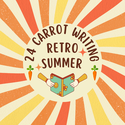 Puffy stickers on a Trapper Keeper, a smile glistening with strawberry Kissing Potion, and a pencil box filled with scratch-and-sniff markers, and you were off to a great start for the school year. But how do you restart your writing after a summer of listening to the Pretty in Pink soundtrack on your Walkman? This Back-to-School Retro Summer post has the perfect checklist. ~ by Amanda Smith September. The luggage is unpacked. The house is put back together. The kids are settled in their back-to-school routines. Which lends me to ask, in the words of our good friend Joey, As much as we itch to get back to writing, finding our groove after the summer can be challenging. Here are a few strategies that help me focus my writing for the last quarter of the year.
Do you belong to a critique group or book discussion group? Often these groups take a hiatus over Summer. Don’t forget to press reset and get back to your normal routines. When I was a kid I used to hate the “back to school” commercials that appeared on TV mid-vacation. We used to say “back to jail” or “back into the cage.” Now I view this time of year differently. I love the excitement of new teachers and learning. I appreciate routines clicking into place, like the gears of a well-oiled machine. And I enjoy the quiet house and increased productivity that it brings. This fall, may you find your desk, reset your schedule, go back to school, and set aggressive goals to finish the year strong! 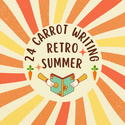 This week's throwback blog was first posted in 2019 and features a gnarly truth about goals. We know it's summer, but you still want to make progress on your path to publication and that means you can't ignore your goals! So crank up your boombox, grab a handful of Pop Rocks, and enjoy as our RETRO SUMMER continues!  By Kelly Carey Every month, according to the 24 Carrot Writing philosophy, I dutifully set both writing goals and craft goals. Every month I hit most but not all of my goals. That’s okay! We have warned against using goals as weapons. Goals are there for motivation. When I miss a goal, I push it over to the next month. Sound strategy right? I thought so, until I took a look back over the past few months and realized that the same goal kept getting pushed. Why? The truth is a bit embarrassing. I’m avoiding the hard goal. Yup. That’s what I’m doing. I’m feeling proud and organized when I sit down to work, but as a scan through my monthly goals, I’m picking off the easy targets and leaving the more challenging tasks to languish and carry over from month to month. The goals that keep getting moved to another month are ones I’m most unsure of – much like I put off doing house chores I don’t like. Laundry or vacuuming? I’ll choose laundry every time. You’ll always have clean socks to wear in my house, as long as you don’t wear them shoe-less on my very dirty floors! I was applying this same dodge and avoid technique to my 24 Carrot Writing goals. This has to stop! I can’t keep clicking off the easy tasks on my goal list. Every month I set a goal to read mentor texts. I love that task and so every month without fail (and sometimes surpassing my objective), I was able to put a nice thick check mark next to that goal. But the monthly intention to draft a new picture book? Pushed! But I’m a writer? I love writing! Writing should come before reading mentor texts! But the blank page, the self-doubt, the internal critic all made reading a lovely book that you all have already written seem like a much nicer (aka easier) task. Time to address this blatant goal slacking. 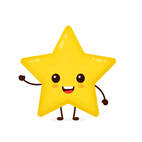 This month I’m picking one super writing goal and one super craft goal and I’m going to underline them – maybe star them – perhaps circle them with a gold pen – and I’m not going to attack anything else on my list until I have hit my super goals every month. I’m actually hoping that those easier, friendlier, can’t-wait-to-do-them goals, which will sit lower on my list, will act as extra motivation. I’ll want to get to those happy place goals, but I’ll have to tackle my super goal first (aka my do-not-pass-go, go-directly-to-them goals!). I’m a little nervous, but I think it will make me more thoughtful when I make out my monthly goals and I’ll be leaning on my 24 Carrot Writing crew to keep me motivated. I bet I’ll feel fantastic when I hit those super goals and that will be worth tackling the hard stuff first! Take a peek at your own goals. Set solid, measurable, and challenging goals. And make sure that you are not hiding behind the easy targets on your list like me! If you were, consider highlighting a super goal, a must do goal, and don’t let yourself avoid it. And now I’m off to do some laundry – just kidding! I’m off to vacuum! Hard stuff first! I’ve got this!  Art by Janine Nel. Art by Janine Nel. ~by Amanda Smith A couple of months ago, I was prattling my mental to-do list aloud while my husband patiently listened. “… and I still have to write down my monthly goals before our 24 Carrot meeting tomorrow,” I said, running out of breath, and steam. And time. His eyes glinted mischievously. “Just copy last October’s goals,” he said. Wrapped up in my busyness, I retorted, “If I could just copy last year’s goals, that means our method doesn’t work very well, does it?” But wait? Does it? His silly suggestion intrigued me. 24 Carrot Writing celebrated its eighth birthday this year. For eight years (more actually, because we were an accountability group before we were a blog) I’ve religiously set monthly goals, checked them off, and reported back to my partners. Our whole premise is rooted in the idea of setting monthly goals and rewarding ourselves for reaching those goals. But the elephant in the room asks: Does it actually work? I always check my yearly goals around this time of the year to see where I hit the mark, where I missed, and where, perhaps the road turned in a different direction. We also encourage our readers to check those goals mid-year with our June Years Eve blogs, making sure we are on track. But never have I ever checked a random month from the previous year to see how it lined up with my current journey. In the day-to-day work of writing, does setting monthly goals actually move me markedly forward? Color me curious! So, with a hint of trepidation, I flipped back to October 2021 in my beloved bullet journal to reread my goals.
What about other 24 Carrot writers? I asked them to peek back at their goals. Kelly:
In the past Kristi had a running list of tasks she’d cross off upon completion, but in January 2022 she joined our accountability group and took up monthly goal setting. One of her January goals was to revise a picture book. Her goal for this manuscript was to send it to Gnome Road publishing when their submission window opened in March. ALPACHAS MAKE TERRIBLE LIBRARIANS will hit the shelves in 2024, published by Gnome Road!
The trend is consistent: projects that were started are now complete, rewrites and revisions occurred, picture books went from concept to query (with all the appropriate in-between steps!), some projects carried over from month to month (oops), but eventually, they get done (or end up in the “darlings file”). Beautiful, inspiring forward motion. By Jove! It works! Would we have done some of these things, even if we hadn’t set them as monthly goals? Likely. But would we have done all of them in a timely manner? Definitely not. To be certain, the smaller things, such as those poems, would have fallen off my radar, and I would have missed out on the joy of this anthology to come. When our kids sometimes feel overwhelmed by the size of a task, my husband would ask: “How do you eat an elephant?” One bite at a time. In the elephantine cycle of writing, revising, critiquing, polishing, querying, waiting, signing, selling, marketing, promoting, doing-it-all-over-again, monthly goals are manageable bites. So this January, yes, dream big and set those yearly goals! But then commit to bite-sized monthly goals, break them up in daily tasks, and keep moving forward. And every once in a while, peek back and see your progress – the biggest, sweetest, brightest carrot of all! To learn more about my bullet journal, and how you can also keep track of things like monthly and yearly goals, check out this blog.  ~By Megan Litwin A former K-2 teacher, I’m a big fan of schedules and routines. I know how important it can be to have a structure to the day you can count on, yet one that also leaves room for organic detours. Schedules can be powerful - and comforting - for children and adults alike. Of course, life hasn’t made it easy to keep to any sort of schedule lately. But this January, I felt determined to start off on the right foot. 2022 brings with it my debut picture book, and I could not be more excited! At the same time, that means I’ve found myself with extra balls to juggle and new roads to navigate: a website, a wonderful co-marketing group, planning for events and school visits. All very good things indeed. But all NEW things, too. Now, besides time to write (to daydream, draft, revise, and more), I need a chunk of time just to keep up with being an “author.” No matter where any of us are on this journey, there is a certain amount of attention that needs to be paid to the business side of things. But how to make time for these different roles, without dropping any balls or feeling frazzled? I needed a comfortable routine I could count on. First, I thought about the time frame of my work day (something that looks different for everyone). My best work hours are absolutely when my kids are in school. Then, I thought about the flow. I knew I wanted to fiercely protect my writing time, no matter what got thrown my way each day. So actual butt-in-chair writing is the morning’s first work. I’ve committed to at least one hour a day for that. Or more! But setting a realistic minimum helps me stay true to that goal. If I’m in the groove and really deep into the work, that could stretch by hours – and I love when it can. Or I might write for just that hour and then do something else writing-related, like critiques. There is a certain amount of open-endedness built in. And a whole lot of morning coffee… No matter how it’s going, by the time lunch rolls around, it’s time to switch gears to author business. Choosing ONE focus per day helps, and that focus varies with deadlines and such. I might work on my newsletter, write reviews, or make pins on Canva (where I definitely can fall down the rabbit hole…). But when these tasks are not creeping into my writing/craft time, I actually enjoy them! After the writing and author work, I scheduled some reading time. Yes, I said “scheduled reading” – because it’s important to me, and my routine should reflect that. I might read a new pile of picture books, some poetry, or a beautifully crafted chapter book. My children get home around 2:30, so scheduling my reading to coincide with that allows me to model my commitment to reading AND encourages them to join me with their own books. Win-win! And finally, we all have many more roles and responsibilities other than writer/author/reader. I might have an appointment, get called to substitute teach, or have a sick child. And even on a perfectly organized work day, it is my role as Mom that is most important to me, and that one requires most of my attention once my kids are home. At that point, I tuck the work away and promise to return to it tomorrow, just like I would if I were leaving the classroom or office. Schedules work best when they are flexible structures. After an inspirational virtual webinar with Bethany Hegedus at the Writing Barn, where she talked about setting goals for each quarter of the year, I realized that maybe schedules could also be seasonal structures. I decided to call this a WINTER work schedule, and I already felt a lot less pressure to make it perfect. It may change when spring arrives, and then change again to fit the cadence of my summer days. But it suits me right now. It makes me feel full and warm – because I am making space for what matters to me, day in and day out, as this new year begins. And…it is an acronym!! Because, after all, I’m forever-at-heart a primary school teacher! A WARM Winter Work Schedule: Writer Author Reader Mom (*etc.) No time slots. No word counts. No pressure. These are simply the daily roles I want to spend time on, and in this order. What kind of an overarching structure works for YOU? What does your “winter writing season” look like? I hope it is warm and wonderful and full of whatever you need…right now.  Megan Litwin is a children's book author and regular contributor for 24 Carrot Writing. Her debut picture book TWINKLE, TWINKLE, WINTER NIGHT, illustrated by Nneka Myers (Clarion Books) will hit the shelves October 2022. To learn more about Megan visit her at www.meganlitwinbooks.com/. 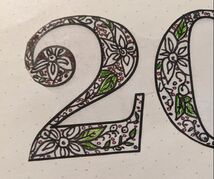 ~ by Amanda Smith The sweet time between Christmas and New Year is when I usually ponder writing goals: What worked the previous year? What didn’t? How far did I come? Where am I heading? And my trusty bullet journal serves both as memoir and roadmap. In preparing my bullet journal for the new year, I wanted to write the year 2022 for my cover page in a unique way. Last year I had handwritten it using brush pens, which was fine, but I felt that the new year deserved some more flair. So, after playing around a bit, I landed on something I’ve never done before – Zentangle. Using my inspiration quote for the year, I knew I wanted something botanical, and after using WordArt to set the outline of my numbers and googling some Zentangle designs, I set to work. It took some time to find my rhythm, but I finally figured out the scale of the design and the limits of my chosen font and everything went fine and dandy with that first two and half the zero. 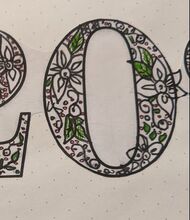 But all of a sudden, a little flower decided to jump the outline. “Huh,” I said. “Why are you squashing me like this?” asked the flower. I sat back and stared at that rebel flower, the sharp ends of its petals stubbornly poking outside the soft rounded line. Maybe it had a point. Maybe it didn’t have to be all neatly contained within the oval line of the zero. What if the flowers bloomed outside the lines of the other twos?  I loosened my design. And I listened to the flowers. And I watched them grow and BLOOM! And as I worked, I thought about my goals and hopes and dreams for this year. To reach past limits. To listen to my art. And to Bloom! As you think and plan your writing goals for the new year, I want to encourage you to do the same:
During the month of January, Annie, Kelly, and I will be posting our yearly goals into the 24 Carrot Writing Goals tab. Take a look (you can also see my complete, blooming 2022 zentangle there) and then set your own goals and dreams for this year. And be sure to post them somewhere you will see them often.
Together, let’s burst out of the constraints this last year or past habits might have placed on us. Let’s become green-thumbed curators of our vibrant, fragrant story-gardens.  Guest post by Francine Puckly A little over a year ago I made the very difficult but necessary decision to retire from 24 Carrot Writing after five wonderful years. I have missed the camaraderie with my friends and co-founders, and I’m excited to be invited back this week to talk about what I hold near and dear — reimagining creative visions, establishing long-term plans, and setting tangible, immediate goals. Each new year I take several hours (or sometimes a luxurious whole day!) to celebrate the concluding year’s accomplishments and reassess my goals for the year ahead. In the summer of 2019, I saw a large gap in my September calendar approaching — my kids would both be departing for college while at the same time my husband was heading out of town on business. Rather than pack the days and evenings with hikes and dinners with friends (oh, so tempting!), I trusted my gut to take that time for some extensive reflection. I spent four solid days at home — all to myself — to reexamine my writing vision. What I realized during that block of time was that I had become a little too comfortable with my routine and wasn’t exactly thrilled with how I was spending my writing time. I gathered the nerve to make several pronounced changes to my commitments. While it was scary to be unmoored from what was comfortable and familiar, I created an avenue for new opportunities to seep in. And seep they did! I had additional novel-writing time and took on a freelance editing gig in June that led to a full-time writer/editor position in December, but the biggest shift was that I found myself hired by a publisher to write and submit an entire manuscript in seventeen days! The work-for-hire pursuit would not have come about if I hadn’t cleared ample space for it. I was e-introduced to the editor in May, and after an initial video interview, she asked me to submit several writing samples for a couple of different book ideas. We went back and forth several times, during which time I submitted additional samples, incorporated editorial feedback and provided revisions. The editor pitched the project to the editorial team, they authorized it, and we set off on our own version of Operation Warp Speed. (For more details of that process and my takeaways, see Lessons from a Seventeen-Day Book Sprint.) Because I redirected my efforts and reset my long-term goals, The Word-a-Day Vocabulary Workbook, not even a thought seven months ago, hits bookstores today! The poet, Wendell Berry, said it best. “The life we want is not merely the one we have chosen and made. It is the one we must be choosing and making.” What life will you be choosing and making in 2021? Here’s what I wish for all creatives this year (beyond health and well-being): Before you set your goals, may you have plenty of time for self-reflection. May you have the courage to make the necessary changes in your life that will bring joy, surprise, and authenticity to your creative endeavors. And may you trust yourself — always — because, deep down, you know what’s best for you. Warmest best wishes for a joyful writing year! 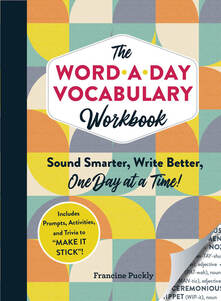 Francine Puckly’s debut book, The Word-a-Day Vocabulary Workbook (Adams Media), is an entertaining nonfiction blend of 365 obscure words, amusing word trivia, and thought-provoking daily writing prompts, perfect for writers who need to get their creative juices flowing each day. It hits stores near you Tuesday, January 12, 2021. You can find Francine online at francinepuckly.com, on Facebook at Francine Puckly, Author, and on Twitter and Instagram @francinepuckly.  ~By Amanda Smith You know those days where you spend an entire day revising a picture book manuscript, making dummies and cutting your manuscript into little strips and studying the dialogue to make sure your characters’ voices are distinct yet consistent? But at the end of the day nothing looks much different. Or those days you research agents to query, and after many hours, have nothing more than a list to show? Do you sometimes feel that drawing up maps or house plans for your novel, or filling out character sheets are wasting writing time, because no actual words are added to your WIP? A lot of the work we do as writers, cannot be measured in tangible, concrete ways. It is easy to discount these aspects of our work. Yet, all these things are part of the writing journey and we need to acknowledge them as valuable. That is why, at the beginning of this year, I knew I wanted to track my writing progress in a way that included all these aspects of writing. Enter: The bullet journal. Wait, hear me out. I’ve also looked at bullet journal blogs and thought What is this chaos? or This seems like a giant time suck. But that is the beauty of a bullet journal: You can make it exactly what you need it to be. To have a journal that functions for you, there are a few questions to answer: 1. What is the purpose of your bullet journal for you? What do you want it to do? Some authors, like Kate Messner, use one journal to manage all aspects of their life. If that sounds ideal to you, I encourage you to read Kate’s blog regarding bullet journaling here. However, I needed something dedicated to writing and writing-related business ONLY. The rest of my life, my children’s schedules and dentist appointments still went in a daily planner. What I needed was a home for all things writing. 2. How decorative do you want it to be? I like pretty. I buy planners, folders and notebooks based entirely on looks. I want beautiful covers AND decorative pages inside. Very early on in my research I realized that, if left unchecked, the bullet journal, instead of the writing, would become the project. I could easily spend all my time making it pretty, with swirly calligraphy and coloring pages. But that was not the purpose. The journal was to be my tool. I settled on a simple, functional format, with a little pretty on each page. I do not spend more than an afternoon a month to prep the next month’s tracking pages. (I would not recommend setting up your entire journal at the beginning of the year. As you and your journal grow together and get used to one another, you are going to want the freedom to tweak the format.) Also consider size here. I wanted room to spread out and use sticky notes and notecards, so my journal is 7X10 inches. 3. What do you need in your journal to move you towards reaching your goals? I took some time over my Christmas break last year to research other writers’ bullet journals and noted which components would be helpful to me. Inspired by M.M Chouinard, I jotted down what I wanted to track in my journal. Here is where I landed: A Writing Dashboard with all my projects and in which stage of the writing journey they are - an overall view of all my current projects. I love using sticky notes on my dashboard, because I can easily move projects from the “Drafting” heading to the “Revision” heading as the project moves along. A place to track yearly and monthly goals. The image shows my monthly goals for September, but I also have a page in the front of the journal where my yearly goals are listed. I check in on those quarterly to see if I am on track. I like to tally reading with my monthly goals. Some writers have separate book logs in their bullet journals, while others like to use a coloring sheet glued into the journal. Towards the front of the journal I have a page to track overall progress in my individual projects. For novels I mark progress by scenes. For picture books, I check a box every time I do a revision. For every month I have a writing log to jot down daily word count. For revisions I write the section/ scene I revised and its changed word count. Notice the celebratory sticker at the end of the month? Don't forget to reward met goals with happy carrots! On the page next to my writing log, I use Five Things a Day to track other writing related work such as agent research and days spent on querying, critiques, blogs, research, and so forth. Even though I hardly ever fill all five boxes for the day, I do learn a lot from looking back at these pages. I have learned, for instance, that I prefer not to write and revise on the same day. I have a section designated for monthly blog meeting notes and blog related business. If you do not have a blog, you might want a designated space for website planning and maintenance, or social media strategies. A grid with sticky notes keeps track of queries for each project. I still keep detailed records in a spreadsheet, but with this tool I know at the drop of a hat exactly where which manuscript is. Having everything writing related in one place made this a super productive writing and querying year for me. What do you need to track your progress and other writing related notes? I would like to encourage you to take some time over the next few months to come up with a custom-made system that will empower you in your writing journey.
 ~ By Amanda Smith Here we are: On the cusp of a new year, and a new decade. As we peek over the rim and catch the first glances of 2020, our breaths catch a little. Our hearts race, because… it holds scary challenges and huge uncertainties, it holds dreams, and hopes, and exciting opportunities, it holds its arms wide open for us to dive in. Whether you tentatively dip your toes, or dive in with head-first-abandon, knowing where you intend to go, is vital. Take some time during the month of January to program your writing GPS. Plot your calendars, prepare your bullet journals, pin your tracking sheets, and set those yearly goals! Remember to add carrots to keep you motivated. Oh, life will bring derailments – that is inevitable. It will also bring scenic detours for us to embrace. But when we have our road mapped out, it is so much easier to get back on track. We posted our 2020 writing goals under the GOALS tab on 24 Carrot Writing. Scrutinize our road maps. Perhaps they'll help you find your own way. Throughout the years we have written many posts about goal setting. Below I have linked some for easy access, but you can find them all under the “Writing Goals” tag to the right of your screen. So read up, have some fun with colored pens, and planners, and chart your way for writing success in 2020. Annie’s SMART goals: http://www.24carrotwriting.com/-blog/the-smart-key-to-your-carrots Amanda’s goal setting strategy explained: http://www.24carrotwriting.com/-blog/a-year-of-goals Kelly’s handy tracking resource: http://www.24carrotwriting.com/-blog/a-24-carrot-writing-goal-worksheet Amanda’s updated yearly planning and printable resource: http://www.24carrotwriting.com/-blog/doing-the-necessary Annie’s forgiveness clause: http://www.24carrotwriting.com/-blog/set-your-writing-goalsbut-allow-for-some-slack Kelly’s unique monthly plan: http://www.24carrotwriting.com/-blog/give-your-writing-the-wrqs Monica Tesler takes us from goals to tasks: http://www.24carrotwriting.com/-blog/new-year-new-goals-now-what Francine's tools for staying in track: http://www.24carrotwriting.com/-blog/tools-for-staying-on-track Feel free to browse under http://www.24carrotwriting.com/-blog/category/writing-goals Off site: Bullet journals: https://www.katemessner.com/bullet-journaling-childrens-author-version/ Inside a writer’s bullet journal: https://www.youtube.com/watch?v=SiLhM17Kw38 |
Peruse blogs for advice and tips from KidLit creatives.
Categories
All
Archives
April 2024
Click to set custom HTML
Click on the RSS Feed button above to receive notifications of new posts on this blog.
|
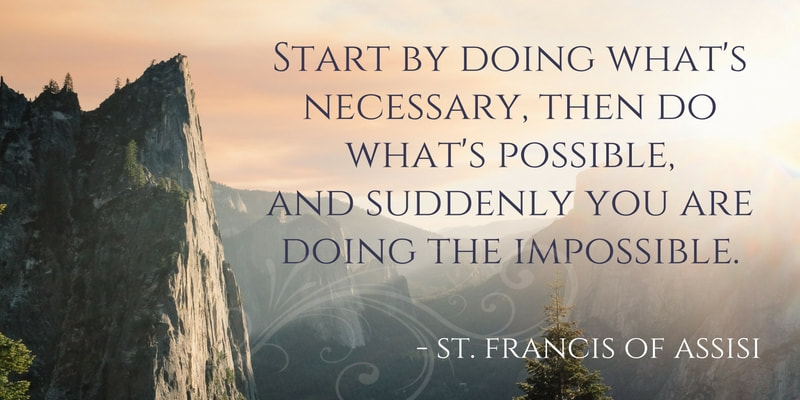
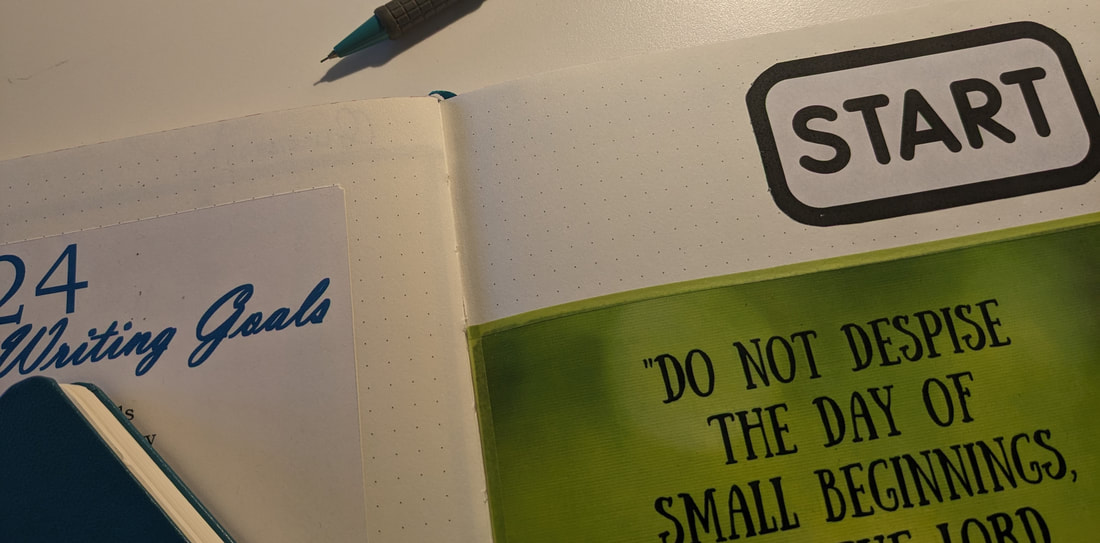

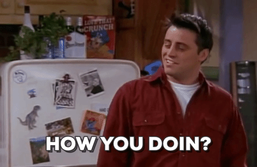
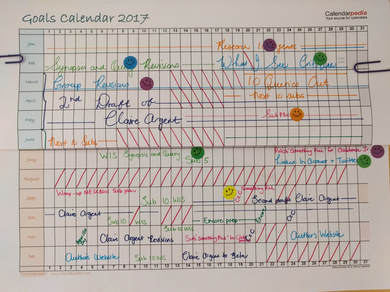

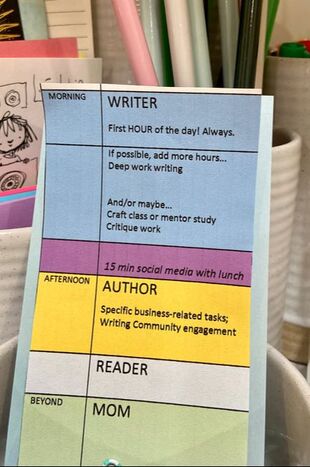
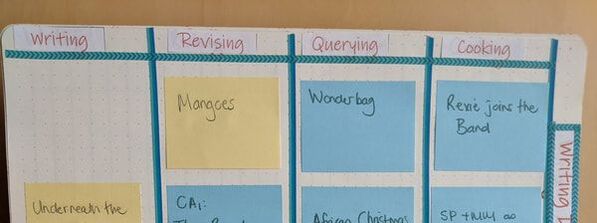

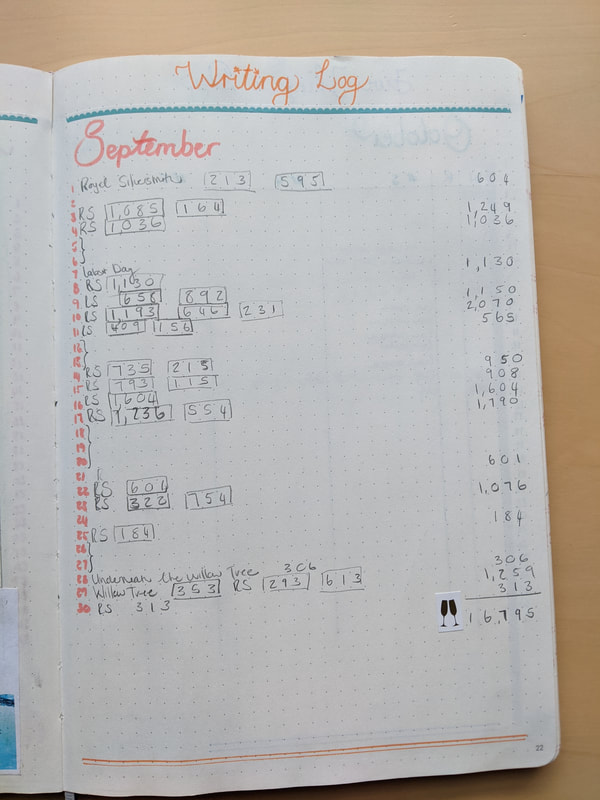
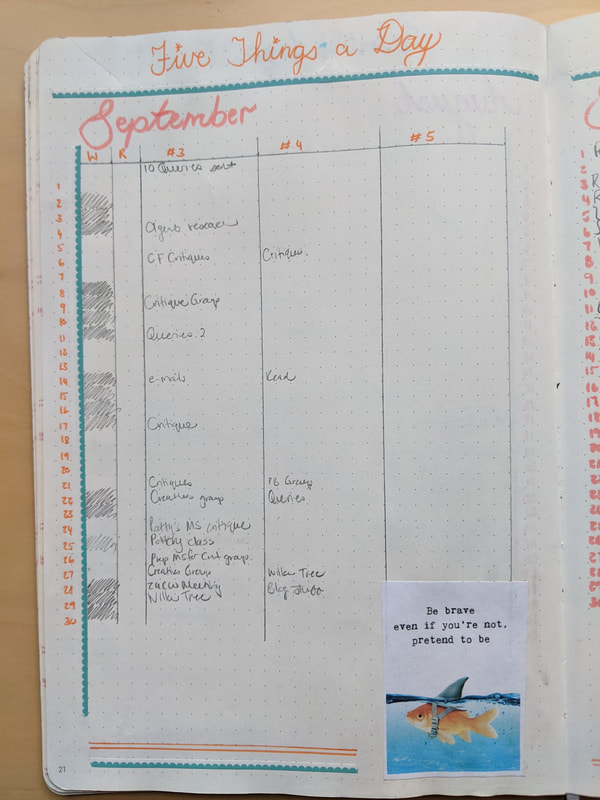
 RSS Feed
RSS Feed